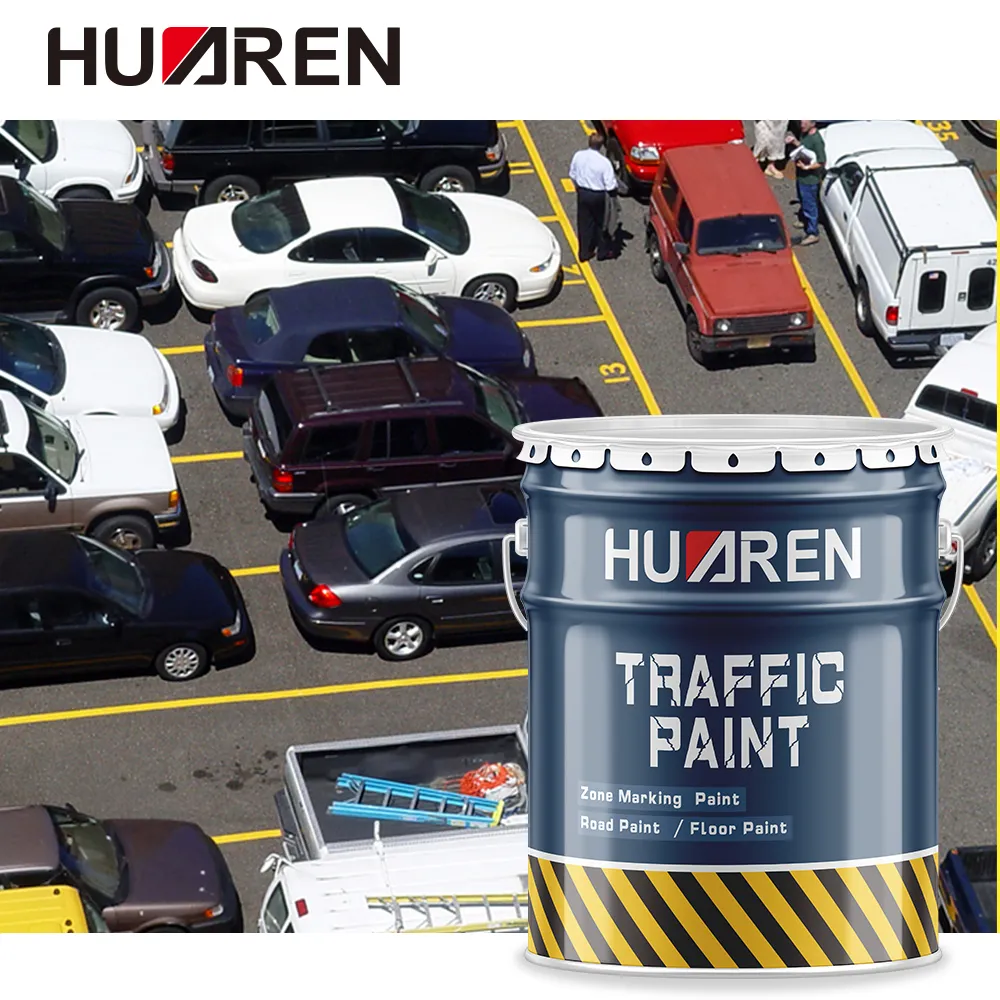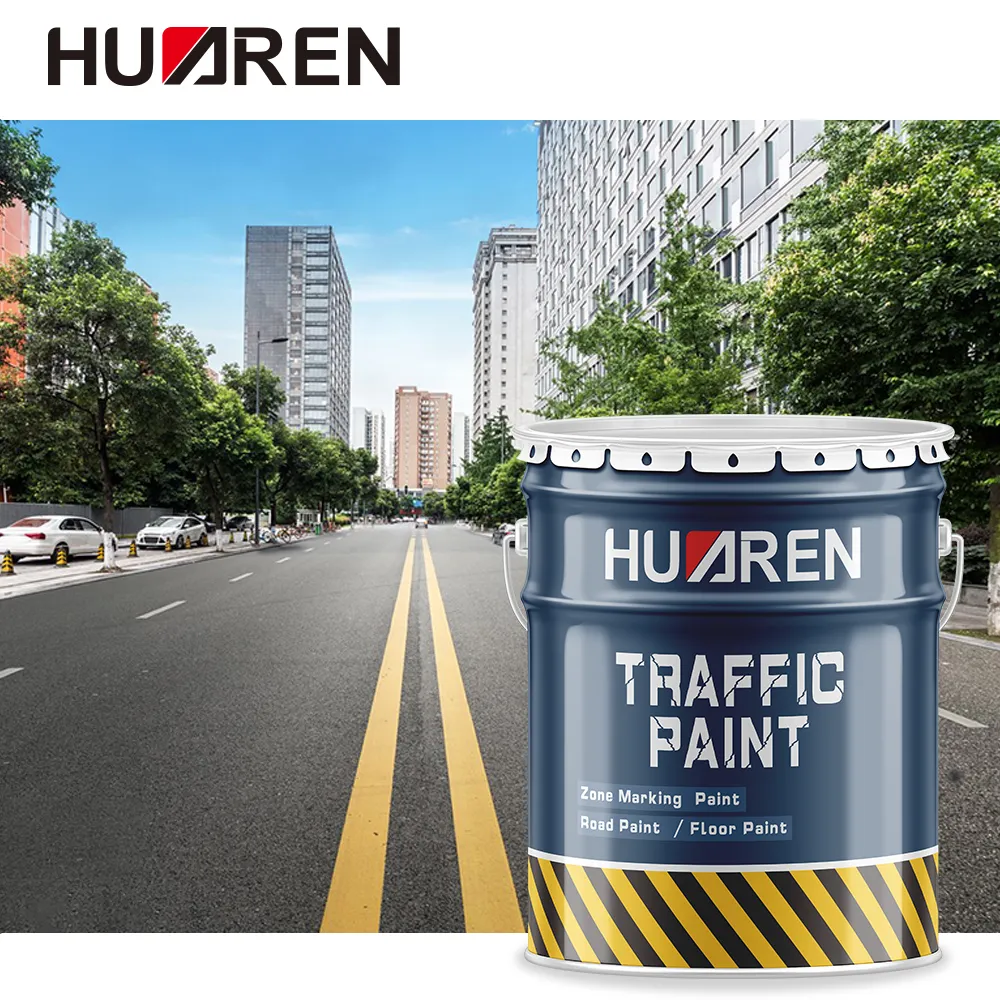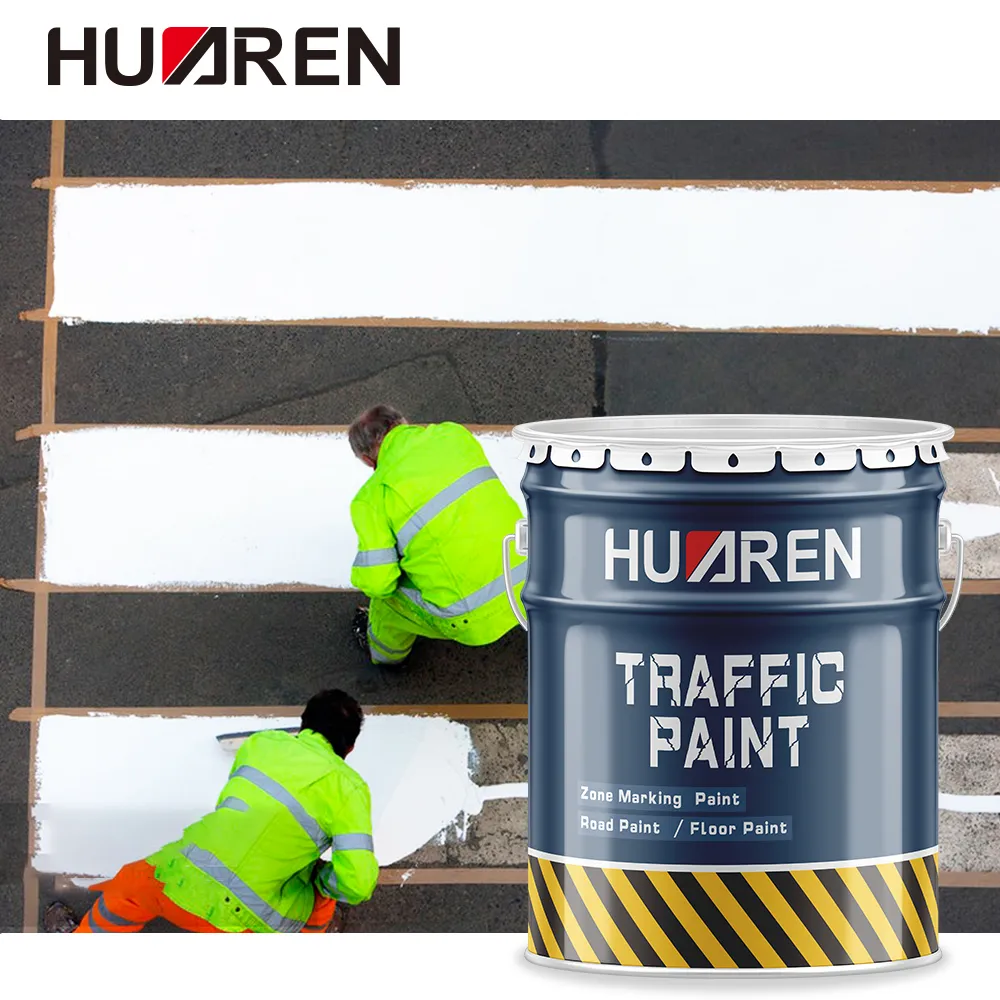Striping paint plays a vital role in modern life, whether it is road traffic management, parking lot planning, or sports field marking, striping paint can provide clear and durable identification.
This article will explore in detail what striping paint is and the various uses of line striping paint, revealing the irreplaceable importance of this humble paint in various fields.

What is striping paint?
Striping paint is a paint specially used for marking and marking, and is usually used to draw clear and durable lines on various surfaces. This paint has good adhesion, wear resistance and weather resistance, and can maintain its color and shape under various environmental conditions.
What are the components of striping paint?
The main components of striping paint include base material (resin), pigment, filler, solvent and additive.
● Base material (resin): Commonly used resins include acrylic resin, alkyd resin and polyurethane resin. The main function of the base material is to provide adhesion and mechanical strength of the paint film.
● Pigment: Give the paint film color, commonly used pigments are titanium dioxide (white), lead oxide (yellow) and other inorganic pigments.
● Filler: Increase the thickness and wear resistance of the paint film. Common fillers include calcium carbonate, talcum powder and aluminum silicate.
● Solvent: Used to adjust the viscosity and fluidity of the paint for construction. Common solvents include toluene, xylene and ethyl acetate.
● Additives: Improve the performance of the paint, including anti-settling agents, leveling agents and thickeners.
What are the characteristics of stripe paint?
Stripe paint has the characteristics of high durability, quick drying, high visibility, and environmental protection. The specific introduction is as follows:
● High durability: Able to withstand vehicle rolling and adverse weather conditions.
● Quick drying: Dries quickly after construction to reduce traffic interruption time.
● High visibility: Bright colors and good reflectivity improve the visibility and recognition of signs.
● Environmental protection: Some stripe paints use water-based formulas to reduce VOC (volatile organic compounds) emissions and meet environmental protection requirements.

What are the uses of stripe paint?
The main uses of stripe paint are:
1. Road traffic marking,
2. Parking lot marking,
3. Sports venue marking,
4. Industrial and commercial places,
5. Airport runways and aprons.
Stripe paint has a wide range of applications in various fields due to its unique characteristics and wide applicability. The following is a detailed introduction to some of the main uses of stripe paint:
1. Road traffic marking:
Stripe paint is most widely used in road traffic marking. It is used to mark lane lines, edge lines, guide arrows, pedestrian crossing lines, parking spaces and no-parking areas. Clear road markings can effectively guide vehicles and pedestrians, regulate traffic order, reduce traffic accidents, and improve road traffic efficiency.
● Lane lines: separate the same or opposite lanes, clarify the driving route, and prevent vehicles from changing lanes at will.
● Edge lines: mark the boundaries of the road to prevent vehicles from driving out of the lane.
● Guide arrows: indicate the direction of travel and help drivers drive correctly at complex intersections and intersections.
● Pedestrian crossing line: Provide a safe passage for pedestrians to cross the street and remind vehicles to slow down and avoid.
● Parking space: Define parking areas to help vehicles park in an orderly manner and increase the utilization rate of parking lots.
● No parking area: Mark areas where parking is prohibited to maintain traffic order and smooth roads.
2. Parking lot markings:
In parking lots, stripe paint is used to mark parking spaces, passages, pedestrian passages and emergency exits. Clear markings can help vehicles park in an orderly manner, reduce collisions and friction between vehicles, and improve the utilization rate and safety of parking lots.
● Parking space: Define parking spaces of standard size to ensure that vehicles are parked in an orderly manner.
● Passage: Mark the routes for vehicles to drive and turn to prevent vehicles from reversing and colliding.
● Pedestrian passage: Provide a safe route for pedestrians to pass and prevent collisions between vehicles and pedestrians.
● Emergency exit: Mark the location of the emergency exit to ensure that people can evacuate quickly in an emergency.
3. Sports venue marking:
Striping paint is also widely used in sports venue marking, including marking of football fields, basketball courts, tennis courts, track and field stadiums, etc. Clear and durable markings can help athletes clarify the competition area and rules, ensuring the fairness and smooth progress of the game.
● Football field: mark the goal area, penalty area, center line, sideline and corner area, etc.
● Basketball court: mark the three-point line, free throw line, sideline and center line, etc.
● Tennis court: mark the serving area, sideline, bottom line and center line, etc.
● Track and field stadium: mark the runway line, starting line, finish line and lane dividing line, etc.
4. Industrial and commercial places:
In industrial and commercial places, line striping paint is used to mark passages, work areas, safety areas and storage areas, etc., to help managers and workers clarify work areas and safety regulations and reduce the occurrence of accidents.
● Passages: mark the driving routes of vehicles and pedestrians to ensure safe passage.
● Work area: demarcate the work area to prevent unauthorized personnel from entering and ensure work efficiency and safety.
● Safety area: mark the dangerous area and the safe area to remind workers to pay attention to safety.
● Storage area: demarcate the storage area of items to help managers arrange the storage of items reasonably.
5. Airport runways and aprons:
At the airport, stripe paint is used to demarcate the runway centerline, edge line, stop line and apron markings, etc., to help aircraft maintain the correct route during takeoff, landing and taxiing, and ensure aviation safety.
● Runway centerline: mark the center position of the runway to help aircraft maintain the correct direction during takeoff and landing.
● Edge line: mark the boundary of the runway to prevent the aircraft from driving off the runway.
● Stop line: mark the stop position of the aircraft taxiing to ensure that the aircraft stops at the correct position.
● Apron marking: demarcate the parking position of the aircraft to help ground staff arrange the parking and dispatch of the aircraft reasonably.

How to choose and use stripe paint?
There are many factors to consider when choosing and using stripe paint, including the use environment, expected life, color requirements and construction methods. Here are some guidelines for selecting and using stripe paint:
1. Choose stripe paint according to the use environment:
Different use environments have different requirements for stripe paint. For example, stripe paint in outdoor environments needs to have high weather resistance and UV resistance, and be able to maintain color and shape in various weather conditions. Stripe paint in indoor environments needs to have good wear resistance and adhesion, and be able to withstand frequent traffic and vehicle running over.
2. Consider the expected life:
Choose the type of stripe paint and coating thickness based on the expected service life. For markings that need to be used for a long time, it is recommended to choose high-performance, high-durability stripe paint and use a multi-layer coating system to improve the protective effect.
3. Choose the right color and reflectivity:
Choose the color and reflectivity of the line striping paint according to the specific application requirements. For example, road markings are usually white or yellow to improve visibility and recognition. For markings that need to be reflective at night, you can choose stripe paint with added reflective micro beads to improve night visibility.
4. Correct construction and maintenance:
The stripe paint should be applied according to the instructions and construction specifications during construction to ensure uniform coating and firm adhesion. Use special marking equipment and tools to avoid paint film that is too thick or too thin. Regularly check and maintain stripe paint markings, and promptly repair worn and faded parts to ensure that the markings are clear and effective.


